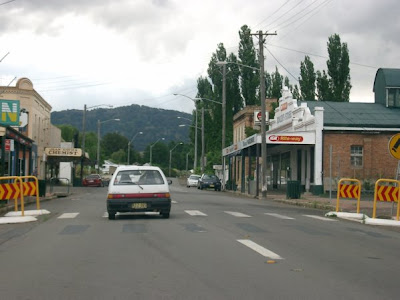Belshaw sans words
Images with a few words + details of various blog posts
Thursday 17 February 2011
Belshaw sans Words merged with Personal Reflections
Friday 16 April 2010
Tennis, Parliament House Sydney 1930s
Monday 13 April 2009
Belshaw Wedding, Sydney, 1944
My parents were married in Sydney in 1944. From left to right, the best man, Dad, Mum, Aunt Helen (Helen Drummond).
Wednesday 1 October 2008
New England Australia - the world wool built
 This photo shows Belltrees homestead in the Hunter Valley.
This photo shows Belltrees homestead in the Hunter Valley.
The house was designed for the White family, one of New England's pastoral dynasties, by J W Pender, one of three generations of the family firm of Maitland architects who left such an impression on the New England built landscape.
This is part of the world that wool built. Now fading from memory, this was a world of struggle but also of great wealth.
Over coming weeks I plan to run selected photos and other material that will (I hope) bring this world alive. You will find the whole series by searching on wool.
Tuesday 30 September 2008
New England Australia - the world wool built 2: the dray

This lithograph by the artist Samuel Thomas Gill (1818 - 1880 - Ballarat Fine Art Gallery) shows wool being carried by dray.
When European settlement began, the new settlers hugged the coast and waterways. Land transport was just too expensive.
Wool changed this because it provided a high value product that could justify land transport.
Monday 29 September 2008
New England Australia - the world wool built 3: development of wool

- John Macarthur (1767 - 1834) is generally regarded as the founder of the Australian wool industry, although others such as Samuel Marsden also played a part.
Macarthur was a difficult man, something of a commercial buccaneer, whose clashes with various Governors culminated in Australia's one and only military coup.
The first auction of Australian wool was held at Garraway's Coffee House in London in 1821. By 1838 sheep had moved into every Australian colony, the annual wool clip was over two million kilos and wool had become Australia's main export.
Sunday 28 September 2008
New England Australia - the world wool built 4: the 19 counties and the limits of settlement

Today, people best know Murrurundi as a small settlement just before the New England Highway leaps up the Liverpool Range. In fact, this was frontier country.
In 1829 Governor Darling attempted to control the limits of settlement by proclaiming 19 counties surrounding Sydney. Murrurundi lay on the northern edge. To go further north meant being outside the rule of law.
The move failed. Wool boomed in 1830 and settlement spread rapidly.
Those going beyond the bounds of settlement became known as squatters because they were squatting on the land without license or payment.
Friday 26 September 2008
New England Australia - the world wool built 5: the Aborigines

European settlement moved in two broad streams, one inland, one river hopping up the coast.
The world the squatters entered was not unpopulated. Indeed, while population densities varied, New England was quite densely populated, especially along the humid coastal strip.
The map (original here) shows the distribution of Aboriginal language groups. The Hunter tribes had already felt the impact of European settlement. Now all Aborigines would be affected.
Thursday 25 September 2008
New England Australia - the world wool built 6: heading north

Those heading north to take up land had to pack everything onto drays, not just tools and household goods, but also basic rations.
The drays travelled at best at the pace of the stock, creating a constant stream of noise and dust. Men were needed not just to drive the drays, but also to act as shepherds.
This much late photo from the Powerhouse Powerhouse Museum shows teamsters having a break. While later, it gives a feel.
Wednesday 24 September 2008
New England Australia - the world wool built 7: squatter's daugher

This painting by George W. Lambert painted in 1923-1924 is simply called The squatter's daughter.
The squatters who went north from the Hunter Valley to find new land may have been just that, illegal squatters, but within a short time in historical terms they were to become an establishment in their own right.


